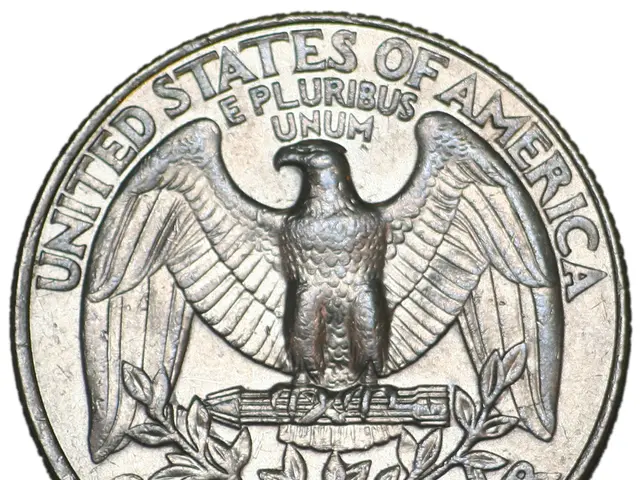Timeframe for conceiving post ovulation
When trying to conceive, understanding the fertile window - the time frame during which a person is most likely to become pregnant - can significantly increase the chances of success. Here's a comprehensive guide to help you navigate this crucial aspect of the reproductive process.
Determining the Fertile Window
The fertile window generally spans about 5 to 7 days, ending on the day of ovulation, which is when an egg is released from the ovary and can be fertilized by sperm. To calculate the fertile window based on menstrual cycle length, you first need to determine the day of ovulation.
Menstrual Cycle Length and Luteal Phase
Typically, a menstrual cycle lasts between 21 and 40 days, with an average of 28 days. The luteal phase, which is the time from ovulation to the start of the next period, is usually around 14–15 days. By knowing your menstrual cycle length and estimating the luteal phase length, you can calculate the ovulation day and the corresponding fertile window.
For example, if your menstrual cycle is 29 days long and the luteal phase is 15 days, ovulation would occur roughly on day 14 of the cycle (29 – 15 = 14).
The Fertile Window and Sperm Survival
Sperm can survive in the reproductive tract for up to five days, while the egg is viable for about 12–24 hours. Therefore, the fertile window includes the day of ovulation plus the five days before it.
Tracking Ovulation
Several methods can help track or predict ovulation, including:
- Basal Body Temperature (BBT) Charting: By taking your temperature every morning before getting out of bed, you can detect a slight rise in temperature that indicates ovulation.
- Ovulation Predictor Kits: These over-the-counter tests measure the levels of luteinising hormone (LH) in your urine to predict ovulation.
- Cycle Charting Apps: Apps like Clue period tracker and Flo period ovulation tracker can help calculate the ovulation period and fertile window based on your menstrual cycle data.
- Fertility Monitors: These devices measure significant body changes such as BBT, heart rate, and breathing to predict the fertile window.
- Observing Cervical Mucus Changes: As you approach ovulation, cervical mucus becomes thin, clear, stringy, and slippery, similar to raw egg whites.
When to Seek Medical Advice
If you're trying to conceive and:
- You've been trying for over a year without success,
- You're over 40 years of age,
- You have a history of infertility, repeated miscarriages, pelvic inflammatory disease, endometriosis, prior cancer treatment, or irregular periods,
It's recommended that you speak with a doctor for further advice and potential treatments.
Visiting a dedicated hub for women's health resources also provides access to research-backed information and in-depth resources on women's health.
Conclusion
By understanding the fertile window and implementing effective tracking methods, you can significantly increase your chances of conceiving. Remember, every person's body is unique, so it's essential to be patient and adapt your approach as needed.
[1] American College of Obstetricians and Gynecologists (ACOG) [2] Mayo Clinic [3] National Health Service (NHS) UK [4] Centers for Disease Control and Prevention (CDC) [5] Planned Parenthood
- Knowing the fertile window is crucial for those attempting to conceive, as it spans about 5 to 7 days, ending on the day of ovulation.
- The menstrual cycle length and luteal phase play crucial roles in determining the fertile window, as the luteal phase length helps pinpoint the day of ovulation.
- In a typical 28-day menstrual cycle, if the luteal phase is 15 days, ovulation would occur on day 14.
- Sperm can survive in the reproductive tract for up to five days, whereas the egg is viable for 12–24 hours, making the fertile window the days before and including the day of ovulation.
- BBT charting, ovulation predictor kits, cycle charting apps, fertility monitors, and cervical mucus changes are all methods that can help track ovulation and predict the fertile window.
- If you've been trying to conceive for over a year without success, or have a history of infertility, repeated miscarriages, pelvic inflammatory disease, endometriosis, prior cancer treatment, or irregular periods, it's advisable to consult a doctor.
- Resources on women's health and reproductive health, such as those found on the American College of Obstetricians and Gynecologists (ACOG), Mayo Clinic, National Health Service (NHS) UK, Centers for Disease Control and Prevention (CDC), and Planned Parenthood, can provide valuable information and support for women's health issues.
- When trying to plan pregnancy, it's essential to remember the unique nature of each person's body and to be patient in adapting your approach.
- addresses various aspects of women's health, offering research-backed resources and in-depth information for better health and wellness.








